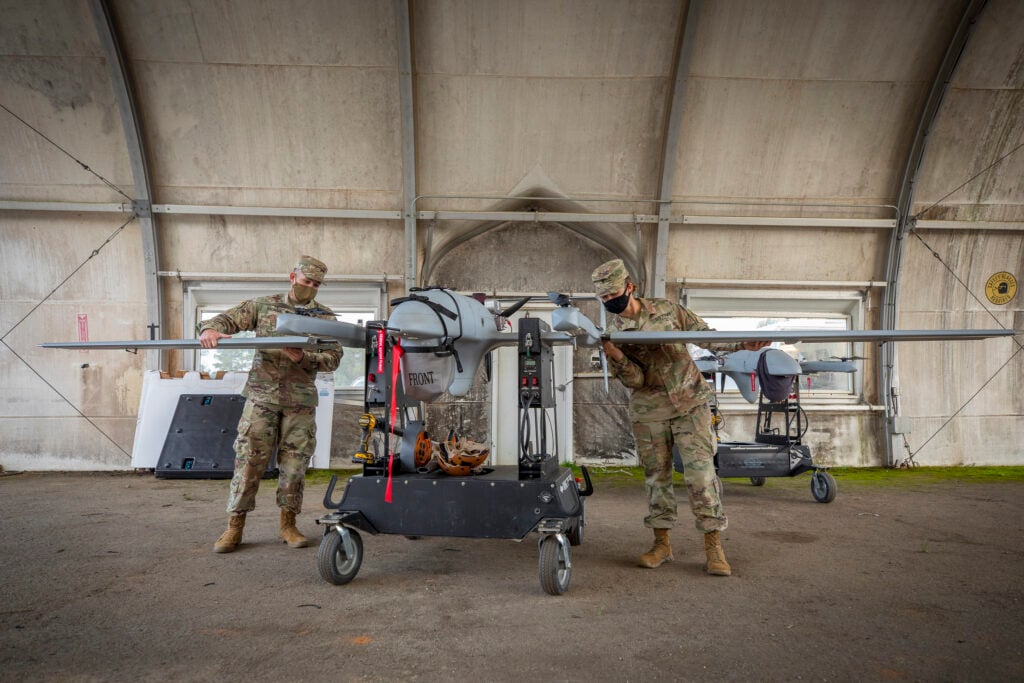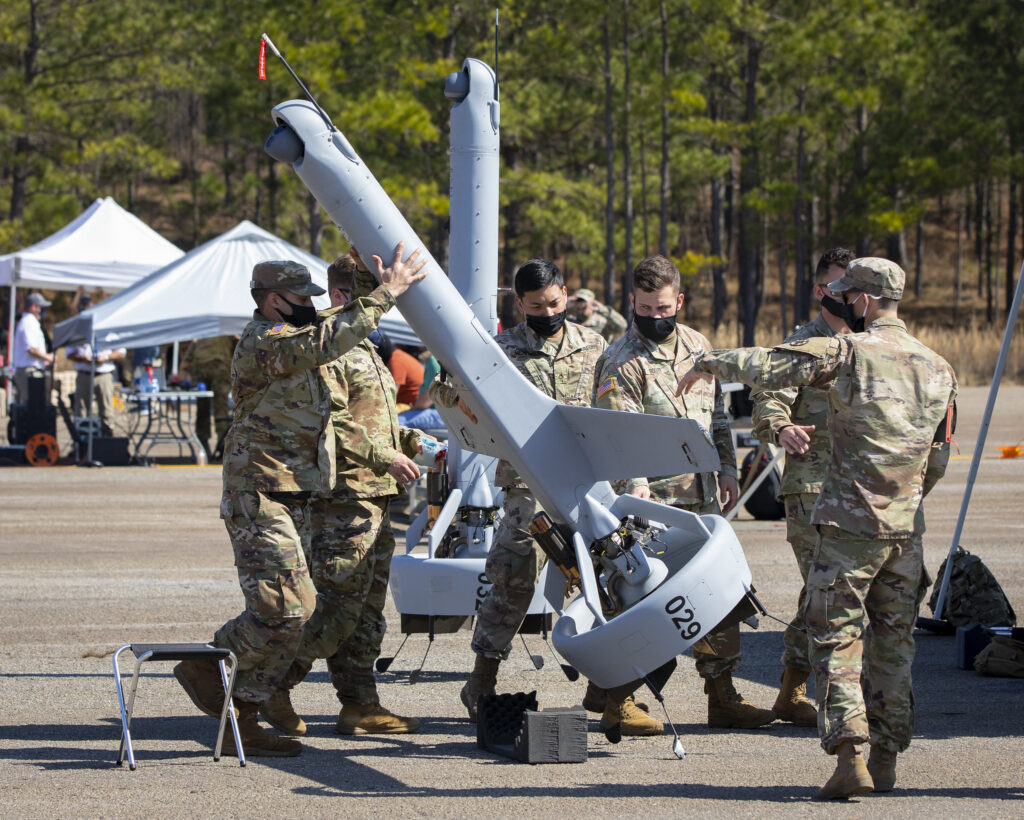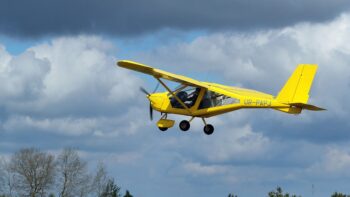
Soldiers do pre-flight checks on the L3 Harris FVR-90.
WASHINGTON: All four drones at a Future Tactical UAS rodeo made a powerful impression on attending Army officers and troops, even when rain swept in that would’ve grounded the current RQ-7 Shadow drone.
“Hello from cold, wet, and dreary Fort Benning”, said Brig. Gen. Walter Rugen, director of Future Vertical Lift at Army Futures Command. “Shadow could never fly in this type of moisture, couldn’t even come close,” he told reporters. But all four vendors – the Martin V-BAT, Arcturus Jump 20, L3 Harris FVR-90, and Textron/AAI Aerosonde HQ – successfully made vertical launches (Shadow needs a runway), then switched to horizontal flight for their missions, and returned to base safely.
More important, arguably, than the generals’ impressions: “We saw the soldiers uniformly fall in love with this capability and want to keep it,” Rugen said.

Martin UAS V-BATs
Those soldiers had plenty of time to fall in love. Today’s VIP demonstration was the “culmination” of nearly a year of hands-on experience with all four types of drones across five operational brigades, emphasized Maj. Gen. David Francis, head of the Army’s Aviation Center at Fort Rucker. The goal: test off-the-shelf technology to educate the Army on potential replacements for its aging, noisy and runway-bound Shadow drones.
“The Shadow is a 30-year-old system and the technology has transformed incredibly,” Francis said. He and his fellow Army aviators outlined some of the new drones’ advantages:
- Vertical take off and landing makes the drone much more flexible and eliminates the manpower and equipment required to set up and maintain a landing strip. A team of two or three soldiers can get one of these new drones in the air in a matter of minutes, officers said. One operator, Specialist Anthony Karl, even told reporters that his team was able to pack up their drones and their kit every night and set it up anew the next morning, a major tactical advantage, something Shadow couldn’t match.
- All four drones were also able to conduct that vertical take off and the switch to level flight using autonomous software, without a human having to manage the process by remote control. However, the soldiers using the V-BAT – a unique “tail-sitter” design – did end up physically grabbing it to stabilize it during takeoff and landing.
- All four drones were, in fact, autonomous enough that they could be operated from inside a moving vehicle – typically a Humvee or FMTV truck – which isn’t possible with older drones that require human hands constantly on the remote controls. Instead, the human operators just set waypoints for the drones to fly to, with considerable capability to customize and vary routes – a major aid in avoiding enemy anti-aircraft defenses.
- All four were also compact enough that they could be packed up, with support crew and equipment, for transport aboard the Army’s standard heavy-lift helicopter, the CH-47 Chinook; there are reports one could even fit inside the much smaller UH-60 Black Hawk.
- All four drones were weatherized against humidity and rain; Shadow is not, Spec. Karl said. That said, he cautioned, bad weather still limited what their sensors could see, so the drones’ operations were limited even when they could physically fly.
- In terms of sensor options, all four drones can use much more modern, compact, and powerful payload packages than what’s available for Shadow – a real “leap ahead,” said Rugen.
- All four are technically simpler to operate and maintain. The pre-flight checklist, for instance, drops from more than 150 items to under 70, said Command Sgt. Maj. Michael Crosby, a senior Army Futures Command advisor.
- All four drones are also much quieter than Shadow. That’s more convenient for the crew, who no longer have to shout checklist items over the roaring engine. And it’s much stealthier. While the drones are easy to hear during take-off and landing, Spec. Karl said, they become inaudible from the ground once they reach altitude. (This is a characteristic they share with the V-22, a famously loud aircraft as it takes off that is almost whisper quiet when it flies and swoops in for a landing.)
What’s the Army’s next step? It will analyze the data and soldiers’ recommendations, submit them to the Army Requirements Oversight Council, and have the AROC finalize a formal requirement for the Shadow replacement. That should happen within “weeks,” Rugen said.
The Army’s plan to buy the Shadow replacement is still in flux, said Brig. Gen. Robert Barrie, Program Executive Officer for Aviation. But the Army will hold a competition open to all comers, he emphasized; the four drones field-tested over the past year won’t get any special consideration, he said, although they’ve certainly benefited from such close feedback from the Army.
The service sees the Future Tactical Unmanned Aerial System not only as a replacement for the Shadow, but as an agile eye-in-the-sky connected to a whole digital “ecosystem” of data-sharing, deep-striking Future Vertical Lift aircraft. Having its own low-altitude air force, uniquely able to fly under radar and take cover behind hills, is a big part of what the Army envisions as its contribution to future All-Domain Operations.






















